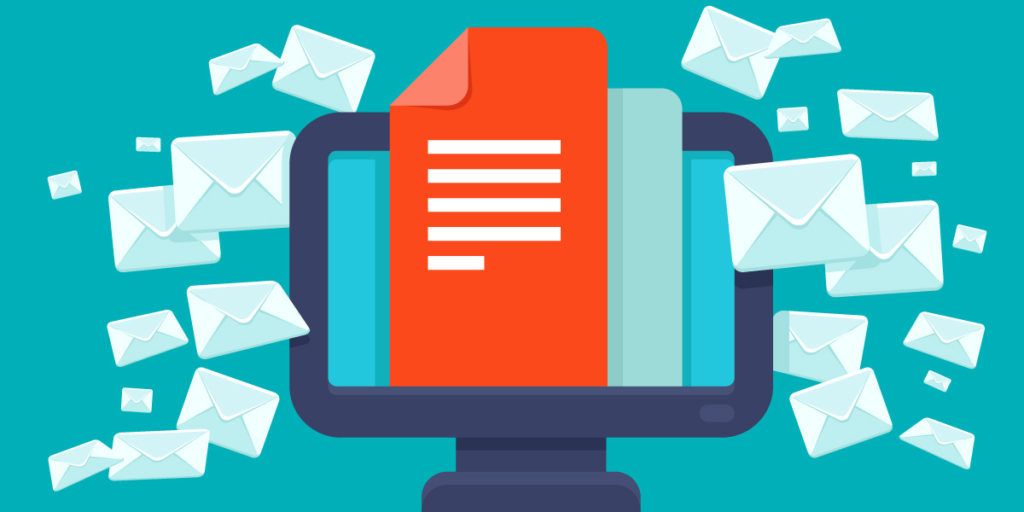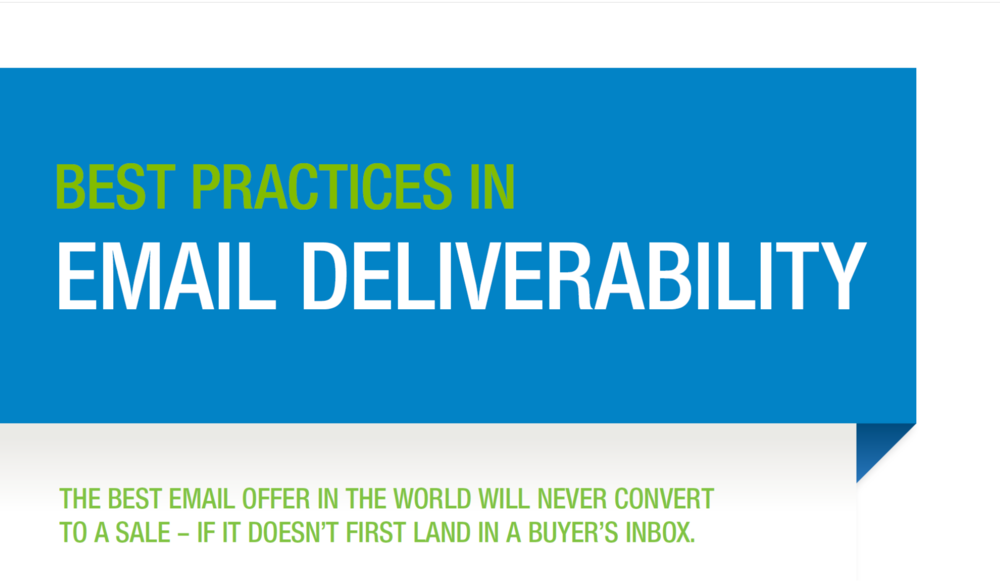
Email marketers consume most of their day in setting up a successful email marketing campaign. It starts from campaign planning to crafting the perfect copy.
They spell out the target audiences, and the message to be sent. All the email marketing best practices are put in place to see surefire campaign success. After putting in so many effort and energy, it hurts a lot if the message doesn't make it to the right recipient. You may have acted with the right campaign strategy, design, and development, but if the email doesn’t reach the inbox, it's futile and of no use.
While measuring the metric, marketers often mix delivery and deliverability as the same term. Both the terms are often used interchangeably but have very different meanings.
Delivery:
In email marketing, Delivery refers to a condition of whether or not a receiver accepts your email. Leaving the inbox or spam folder aside in the first place, Delivery ensure that the message can physically be accepted in the first place?
Deliverability:
Also called Inbox Placement refers to where that message ends up once it is accepted. Deliverability is a condition that tells where the mail ends up once it's accepted, whether in the inbox, spam folder, or another folder. Email Deliverability Consists Of Three Major Components
- Identification:
This is the set of certain protocols that authenticates the sender's identity. This combines several sets of regulations viz. Sender Policy Framework (SPF), DomainKeys Identified Mail (DKIM), and Domain-Based Message Authentication, Reporting, and Conformance (DMARC).
- Reputation:
This metric checks the sender's reputation and trustworthiness. Notably, an organization and an internet service provider (ISP) weigh you differently on a reputation scale. You can yourself boost your reputation by generating positive subscriber behavior and establishing yourself as a trusted sender. This is the finest way to boost your sender's reputation. You can do it by relevant, personal, and specific emails to your subscribers.
- Content:
The content of an email is another key point that creates the difference. The email should consist a message that's appropriate for your audience and must be relevant. Poor writing and messaging practices impact your e-mail deliverability and hurt the chances of your email being opened or read. Among the three parameters cited above, identification and reputation make the most out of it. They are the main reasons behind if your emails are thrown in spam or Junk folders.
12 Ways to Improve Email Deliverability
As you're now more open about the difference between deliverability and delivery, here is a quick take on how to ensure delivery of your emails in the inbox.
1. Keep Your Email List Clean
An email list with likely more inactive subscribers can impact the deliverability of your campaign. As the list constitutes a bunch of inactive subscribers can offset your engagement metrics. That's why you should consider removing or suppressing inactive customers after a set time. If you're facing a serious deliverability crunch, chances are there that your email list includes spam traps, which means it has emails that look like real email addresses. Use an email validation service, software, or tool for removing invalid emails regularly.
2. Allow Unsubscription
Sending emails to those who are not even interested in receiving them, leads to poor open rates. If you have allowed your audience to subscribe to your newsletter, give them an option to unsubscribe it as well. There could be plenty of reasons why your audience is leaving your list. If they're no more interested in listening to you, better let them go.
Attach an unsubscribe link in your email to allow them to do so. It will even help you boost your subscriber engagement and clean up your email list. Once those people go out of your list and your emails reach the people who want to receive your emails, then open and clicks will automatically increase.
3. Stick More to Personalization
While sending the emails, ensure they're being sent to the right people on a very right note. When clicking the send button check whether you are sending content that matters to your audience. This is the most important question needs to be asked yourself first. Sending emails that resonate with your audience positively impacts your deliverability.
4. Verify blacklists
If even after using permission-based, opt-in lists, you are getting frequent non-deliveries then check blacklists to ensure that your domain, IP address, or ISP is not listed there. Inquire about the IP address your emails are being sent from and check it against blacklist databases.
5. Be on a Whitelist
Today, by registering with ISP Whitelists, all campaign owners can have the convenience of being proactive with their ISP reputation. Being registered on an ISP's Whitelist largely ensures accurate email delivery or at least mail delivered to the right recipient.
Also, note that getting on a whitelist is a time-consuming job that involves an authenticating process to ensure that only reputable addresses are regarded. To begin with the procedure, you need to contact your ISP and the ISPs of your major recipients and avail information regarding their particular process for whitelist registration.
6. Maintain Opt-in records
Often it happens that your customer chooses to opt-in to receive your email but later forgets it and puts you on a spam list. In this situation, a spam monitor, like Spamcop or Spamhaus might contact you with an alert, providing you with a chance to show that the recipient did opt-in. But for this accomplishment, you have to maintain a record of opt-in data.
Also, it is suggested to have an opt-in reminder in your email messages. If your recipient gets his/her subscription details in the message, the possibility of reporting the message as spam reduces.
7. Segmentation List
A big list creates big problems, hence, it is better to segment your list and send your message in targeted batches. Categorize your email lists appropriately once data mining is finished to avoid having one massive list. Segmentation can be done by zones so that each zone will receive the message at an optimal time in the day. Also, make use of regional segments to personalize each list subject.
8. Manage List
Maintaining a clean list significantly reduces the amount of hard bounces. Get rid of invalid addresses and other list members who have opted out. Proper data validation may help here. A clean list is more apt for assured delivery. Always keep in mind that ISPs easily pick invalid addresses in a bulk email campaign.
9. Get a Dedicated IP Address
Individuals who need to send bulk emails quite frequently must get a dedicated IP address. In case of sharing an IP address with other users, the chances of getting it flagged by an ISP spam filter get prominent. Also, ensure to have a dedicated IP address that comes with a reverse DNS entry setup.
10. .Take Bounce Rates Seriously, Very Seriously:
Whether your email deliverability meets hard or soft bounce, they've some business risks involved. Before getting into deeper, let's find these two terms. Soft bounce is a temporary problem that occurs due to an unavailable server or full inbox. Even though the error could be fixed, frequent soft bounces may be a cause of concern. If this is the case, you shouldn't wait any more to remove emails that soft bounce.
Similarly, a hard bounce is a permanent failure that prevents an email from being sent. The situation arises when one or more email addresses are non-existent, invalid, or blocked. ISPs love to see low hard bounce rates as it shows that senders take care of email deliverability lists and keep them fresh. Invalid and non-existent emails are likely the great candidates to be spammed or sent to the junk folder.
Managing soft and hard bounce is core to the campaign's success. Irrespective of the email deliverability services provider or the automation solution you use, define a threshold for the bounce. Assign a number that denotes the maximum number of times a mail can bounce. If the bounce reaches to that limit, throw those email addresses out of the campaign.
11. Refrain From Buying Lists:
This is something I frequently tell to my fellow marketers. Whether you've been in marketing for a while or just started up your venture, do not buy an email list to expand your database. Though this strategy seems lucrative for most marketers, this is generally a poor practice with serious drawbacks. See, why should you not go with a purchased email list?
It may lead to unsolicited emails:
When you buy a list from vague sources, you can't authenticate the quality and validity of the emails that the list contains. Since most of those email addresses are unsubscribed, means recipients didn't opt-in to receive your communications, they'll dump your emails in the junk. Every time a recipient marks you as spam, you lose your reputation score. If spam complaints are getting frequent, your ISP could put your IP on the blacklist, which ultimately could make it harder for all your future emails to be delivered.
The quality of the emails may be compromised:
You can't rely on the quality of a list purchased. With a purchased list, you can't be sure whether the email addresses are correctly formatted, and whether they’ve been scrubbed for spam traps or syntax errors. The email addresses in the list could be obsolete, old, and may have email addresses from varied demographics.
It may increase spam rates:
Email marketing companies usually define spam rate thresholds before starting a campaign. So, if your spam complaints exceed a certain percentage, they may terminate your contract. With a purchased email deliverability list, spam percentage may go high. It is deemed to be a really bad reflection on ISPs. To have a fully validated email list, you should perform a full audit of your sending behaviors and list hygiene practices.
12. Segment Your List:
List segmentation helps you to achieve maximum deliverability. If you understand your audience well, there is a good chance that your emails are delivered to the right inbox. Segmenting your email list helps you direct your emails to specific individuals based on their demography and other behaviors.
This helps you to reach the right target audience every time you send out an email marketing blast. This significantly improves the deliverability of the emails. When you start mass mailing to the list, it may backfire if the list contains first-time subscribers or those who are irrelevant to the mail's subject matter. This could send a reflection that you don't value your clients. With segmentation, you can filter specific email addresses targeted to address customers’ unique needs.

Tarun Gupta, CEO of Brainpulse Technologies, is a prolific author and digital marketing specialist. His insightful writings span SEO, content marketing, social media strategy, and email campaigns, offering invaluable expertise to businesses worldwide. Tarun’s contributions continue to shape the digital marketing landscape, guiding success in multiple niches.

August 8th, 2016 at 2:04 pm
If you are using email marketing, treat your list like it’s gold. If you don’t take care of it, your emails won’t be getting delivered to people’s inboxes, which means you won’t be making money from them.
August 8th, 2016 at 4:24 pm
Excellent post. I think that we can increase email open rate by adding some real and unique Title of the Email too.